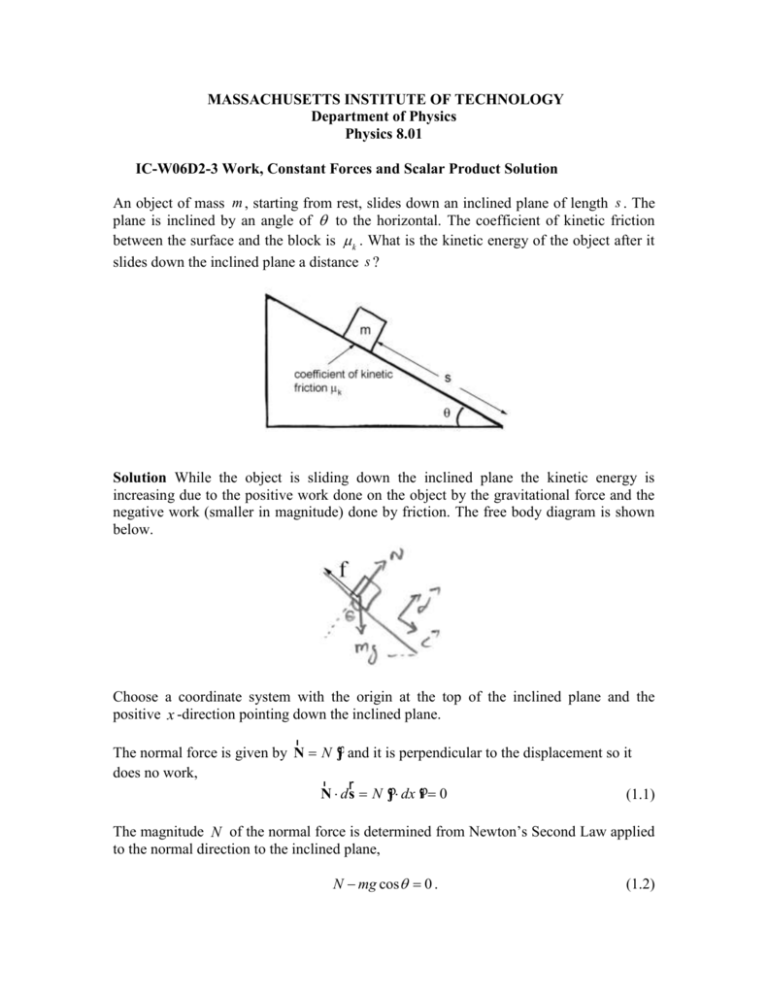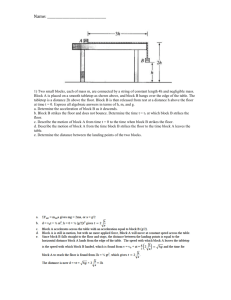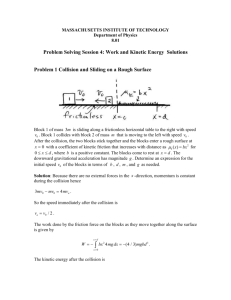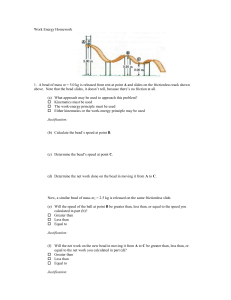Module 12 Lecture 14 Object Sliding on Inclined Plane and
advertisement

MASSACHUSETTS INSTITUTE OF TECHNOLOGY Department of Physics Physics 8.01 IC-W06D2-3 Work, Constant Forces and Scalar Product Solution An object of mass m , starting from rest, slides down an inclined plane of length s . The plane is inclined by an angle of to the horizontal. The coefficient of kinetic friction between the surface and the block is k . What is the kinetic energy of the object after it slides down the inclined plane a distance s ? Solution While the object is sliding down the inclined plane the kinetic energy is increasing due to the positive work done on the object by the gravitational force and the negative work (smaller in magnitude) done by friction. The free body diagram is shown below. Choose a coordinate system with the origin at the top of the inclined plane and the positive x -direction pointing down the inclined plane. r j and it is perpendicular to the displacement so it The normal force is given by N N φ does no work, r r N ds N φ j dx φ i0 (1.1) The magnitude N of the normal force is determined from Newton’s Second Law applied to the normal direction to the inclined plane, N mg cos 0 . (1.2) The friction force is then r f k k N φ i k mg cos φ i (1.3) The work done by the friction force is then Wfriction f x f s i xi 0 r r fk d s ( k mg cos φ i) dx φ i . xf s (1.4) k mg cos dx k mg cos s 0 xi 0 The gravitational force is given by r Fgrav mg sin φ i mg cos φ j (1.5) The work done by the gravitational force is Wfriction f xf s i xi 0 r r Fgrav d s (mg sin φ i mg cos φ j) dx φ i (1.6) xf s mg sin dx mg sin s 0 xi 0 The sum of the work is W Wgrav Wfriction mgs(sin k cos ) (1.7) which is positive because the object is increasing its kinetic energy. The object started from rest, and so the change in kinetic energy is equal to the final kinetic energy at the bottom of the incline, K 1 mv f 2 2 (1.8) The work-kinetic energy theorem W K (1.9) thus substituting Eqs. (1.7) and (1.8) into Eq. (1.9) yields mgs(sin k cos ) 1 2 mv 2 f (1.10)











